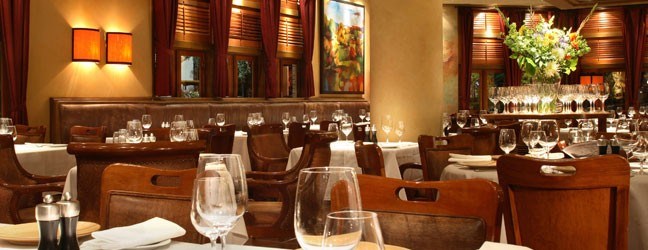When science and food meet you enter the cool world of molecular gastronomy.
Wait.
I could have written the opening line a little differently to really hook readers into this column. Here's another version: When science and food meet you enter the "nerdy" world of molecular gastronomy.
Instead of nerdy I could have gone with geeky.
But, descriptors like nerd and geek don't paint an accurate picture of the chefs in Whistler who are using molecular techniques.
"We're using liquid nitrogen," says Gaetan Charest, a chef who worked at the Bearfoot Bistro until just a few weeks ago when he moved to Montreal. "Yea, maybe we're playing around a bit with it but we aren't full-on scientists."
Charest recently moved on but the Bearfoot continues to use science in the kitchen. In an interview done at the Bearfoot, Charest said he likes using natural powders created from things like seaweed and various starches in some of his recipes.
Chefs at Aura and Araxi are also making use of molecular techniques.
Ferran Adrià, a leader in the movement, dedicated the menu at his Spanish restaurant to food prepared using advanced techniques. Adrià is famed for his apple caviar and foamed mushroom.
Adrià's commitment is to give his El Bulli restaurant customers an experience. He likes to surprise patrons with unexpected contrasting flavour, temperature and texture.
Adrià is so committed to the science of food that El Bulli has closed for long periods in the past so the staff can dedicate time to research. He was doing something right as 8,000 people were served at El Bulli in 2010 from more than two million requests for reservations. Despite the impressive numbers he reportedly has trouble turning a profit.
Chef Pierre Gagnaire in Paris is another leader and he is known for his tempura-style crayfish and roast duck with lime and bitter melon.
Gagnaire works with chemistry professor Hervé This. The term molecular gastronomy was created in 1988 by This and Nicholas Kirti.
Kirti was a physics professor at Oxford. During World War II he worked on the Manhattan Project. Kirti enjoyed cooking as a hobby and he liked applying scientific knowledge to culinary problems. He was an early user of the microwave oven in the late 1960's. Kirti died in 1998 at the age of 90.
Hervé This has a strong interest in food. He discovered that eggs cook perfectly at 65 degrees Celsius. The use of an electrical field to improve the smoking of salmon was another technique he discovered. Hervé This also found that adding a little cold water when beating an egg white increases the amount of foam produced.
The chemist wrote a string of books on the science of cooking dating back from this year to 2003.
He continues to be an influence in the kitchen by continuing to write for various periodicals and websites.
Some popular molecular gastronomic tools include liquid nitrogen, syringes, heat-safe plastic bags, vacuum machines, a scale and the anti-griddle. The anti-griddle looks like a traditional cook top. The catch with the anti-griddle is that the -34 degrees Celsius surface instantly freezes sauces and purées or freezes the outer surfaces of a dish while a creamy centre is created.
Using the tools and the ingredients molecular gastronomy chefs are making use of spherification and emulsification to create dishes that fascinate the eye and the palate.
Iron Chef America commentator Alton Brown suggests kitchen science is a fad and he's worried it might become too popular.
Brown isn't a huge fan and has shared about high-tech methods.
"I use some emulsifiers," says Brown. "Yes, there's xantham gum in my kitchen. Why? Because I'm tired of shaking up a salad dressing. You know, it's practical things. Is it really cool to be able to make corn flakes out of peanut butter? Sure, it's a great trick. But it's a novelty, by and large. My worry about molecular gastronomy, especially with young cooks, is that they will try use it to replace knowing how to cook. Show me you can cook a chicken breast, properly. Show me you can cook a carrot, properly. Now do it a hundred times in row. Then we can play around with white powders."
Brown is the author of seven books and he has produced a few cooking videos.
"Every generation develops tools," Brown says. "And, the tools are a wonderful way to explore the possibilities of the world and of creation.
"It's an interesting skill set, it's an interesting bunch of tools. You can't live on it. It's not food," says Brown.
The chefs of Whistler must get Brown's point because the Whistler restaurants using futuristic high tech science techniques are focused on the traditional and using molecular gastronomy techniques in a limited way.




